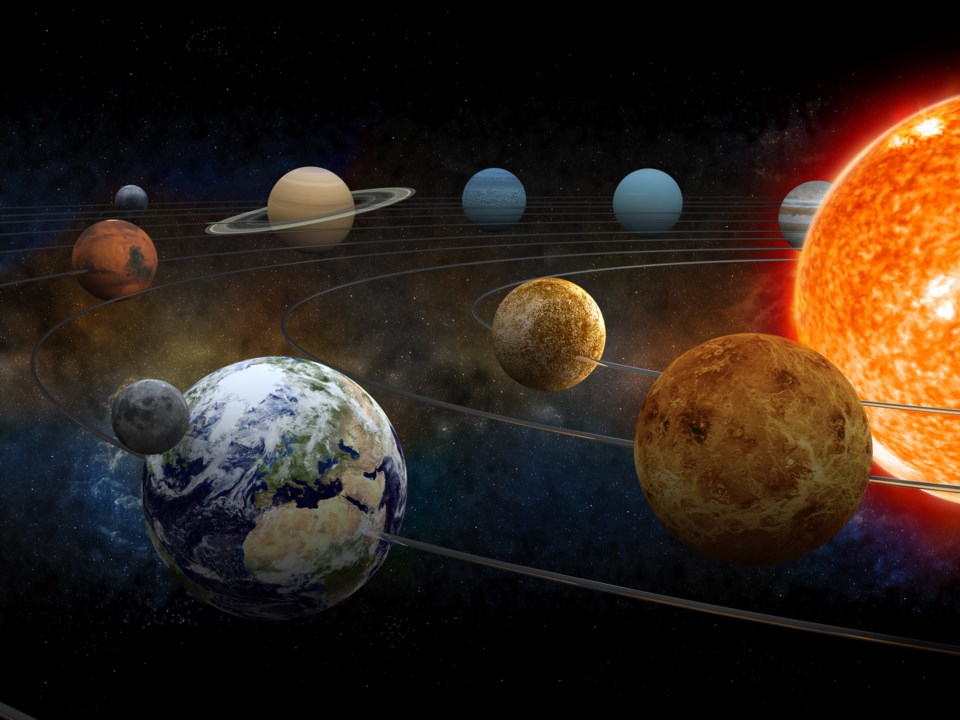Mercury joins four other naked-eye planets at sunrise in the eastern sky to form a line along the horizon with, Venus, Mars, Jupiter and Saturn, and the moon joins the gang June 24 between Venus and Mars.
The moon kicks off June with an occultation of the minor planet Ceres, which should theoretically be visible from the southern edge of Canada. Unfortunately, the event occurs in daylight hours. Shortly after sunset, though, the two objects will be side by side near the horizon. Look for the two Gemini stars, then down halfway to the horizon and a little to the west to locate the very slender moon.
By June 14, the moon is full, and also at perigee (nearest Earth in its orbit), causing large tides in coastal locations. June 18, Saturn lurks four degrees north of the moon, and later that same evening and early into June 19, the Minor Planet Vesta is occulted for viewers in the extreme Southern Hemisphere; otherwise a close encounter of 0.7 degrees. Jupiter is three degrees north of the moon June 21 and Mars is close by, occulted June 22, but again in the extreme south. June 24, another occultation, this time with Uranus and again in the south. Venus is three degrees south of the moon June 26; Mercury is four degrees south June 27.
Mercury joins four other naked-eye planets at sunrise in the eastern sky to form a line along the horizon with, Venus, Mars, Jupiter and Saturn, and the moon joins the gang June 24 between Venus and Mars. Mercury is among the stars of the Hyades on that day, while Venus is directly south of the Pleiades. Uranus and Neptune are in the mix this month, too, just not considered “naked eye.” So, all of the large Solar System objects, including the moon, can be seen through a telescope and with careful planning on that one night of June 24.
Venus continues prominently in the morning sky, but gradually nearing the sun as its orbit takes it behind later in the fall. The waning crescent moon glides by June 26.
Mars is found among the stars of Pisces, the fish, lining up between Venus and Jupiter in the array mentioned above. The crescent moon has a close conjunction June 22.
Jupiter and Mars are together as the month begins, but the speedier Mars pulls away as June progresses. Jupiter is number four in the lineup mentioned above. The last-quarter moon is three degrees south June 21.
Saturn begins retrograde motion June 5, beginning 20 weeks of apparently moving west against the starry background. This is really an illusion, as it’s the Earth moving much faster in its orbit that makes the planets appear to move contrary to their orbital path. Saturn is the westernmost naked-eye planet in the lineup mentioned in Mercury above.
Uranus and Venus share the same space June 11, with the latter planet outshining the former by a full 10 magnitudes — Uranus will be a real challenge to pick out beside the bright Morning Star. The moon is a scant 0.05 degrees south of the blue-green planet June 24th.
Neptune is also lurking among the stars of Pisces, a bit west of Mars. This gas-giant planet begins retrograde motion June 28, lasting over four months.
June 21 is the summer solstice – the days begin to shorten, all too soon!
James Edgar has had an interest in the night sky all his life. He joined the Royal Astronomical Society of Canada in 2000, was national president for two terms, is now the editor of Observer’s Handbook, and production manager of the bi-monthly RASC Journal. The IAU named asteroid 1995 XC5 “(22421) Jamesedgar” in his honour and in 2021 he was awarded a Fellowship of the RASC.



